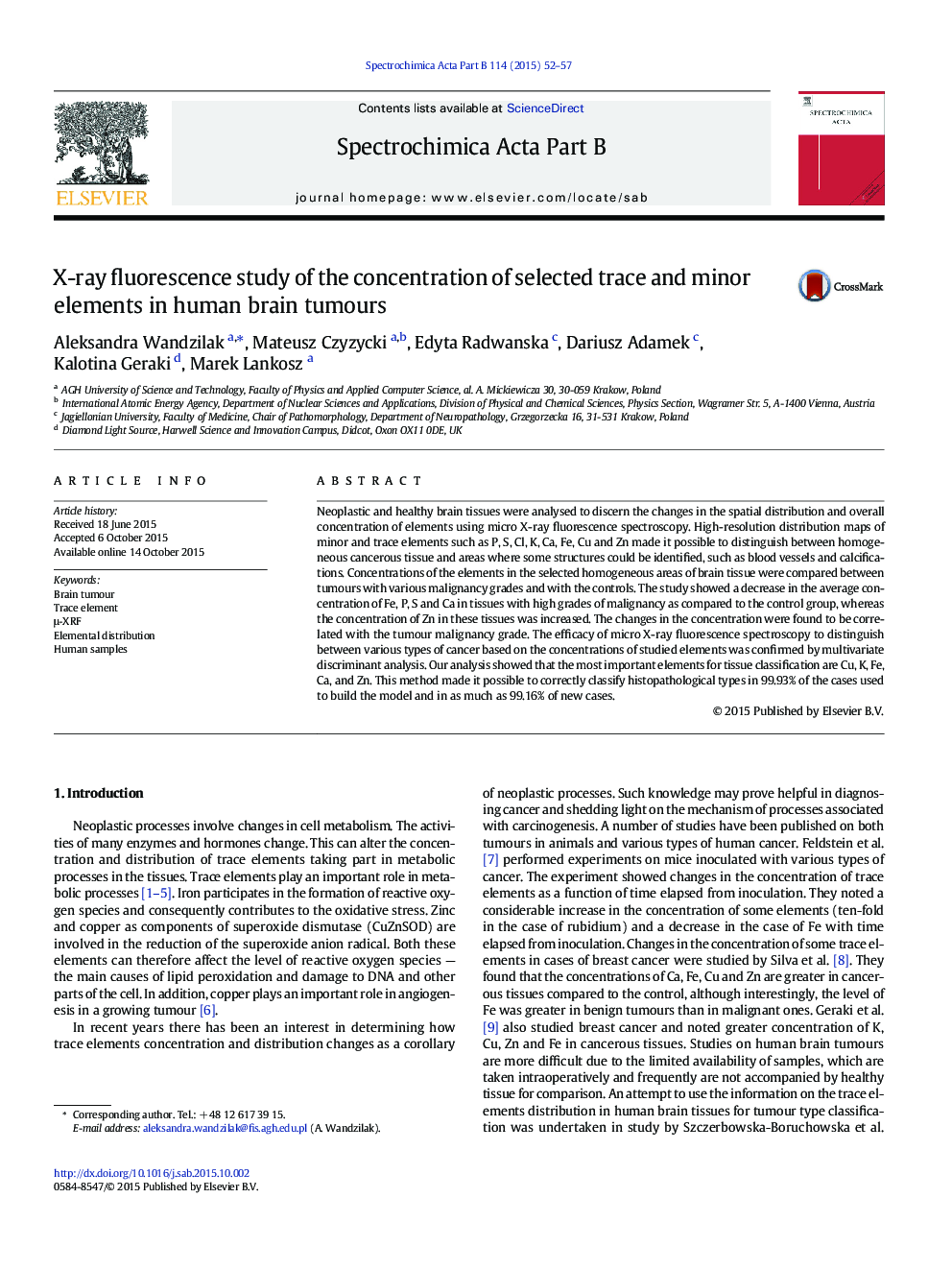| کد مقاله | کد نشریه | سال انتشار | مقاله انگلیسی | نسخه تمام متن |
|---|---|---|---|---|
| 1239769 | 1495689 | 2015 | 6 صفحه PDF | دانلود رایگان |
• An increase in Zn and a decrease in Fe, P and Ca concentrations in brain tumour tissue
• Concentrations of elements in human brain as a function of brain tumour malignancy
• Influence of blood vessels and calcifications on the surrounding tissue element concentration
• Showing the role of transition metals in differentiation between tumour types
Neoplastic and healthy brain tissues were analysed to discern the changes in the spatial distribution and overall concentration of elements using micro X-ray fluorescence spectroscopy. High-resolution distribution maps of minor and trace elements such as P, S, Cl, K, Ca, Fe, Cu and Zn made it possible to distinguish between homogeneous cancerous tissue and areas where some structures could be identified, such as blood vessels and calcifications. Concentrations of the elements in the selected homogeneous areas of brain tissue were compared between tumours with various malignancy grades and with the controls. The study showed a decrease in the average concentration of Fe, P, S and Ca in tissues with high grades of malignancy as compared to the control group, whereas the concentration of Zn in these tissues was increased. The changes in the concentration were found to be correlated with the tumour malignancy grade. The efficacy of micro X-ray fluorescence spectroscopy to distinguish between various types of cancer based on the concentrations of studied elements was confirmed by multivariate discriminant analysis. Our analysis showed that the most important elements for tissue classification are Cu, K, Fe, Ca, and Zn. This method made it possible to correctly classify histopathological types in 99.93% of the cases used to build the model and in as much as 99.16% of new cases.
Figure optionsDownload as PowerPoint slide
Journal: Spectrochimica Acta Part B: Atomic Spectroscopy - Volume 114, 1 December 2015, Pages 52–57
